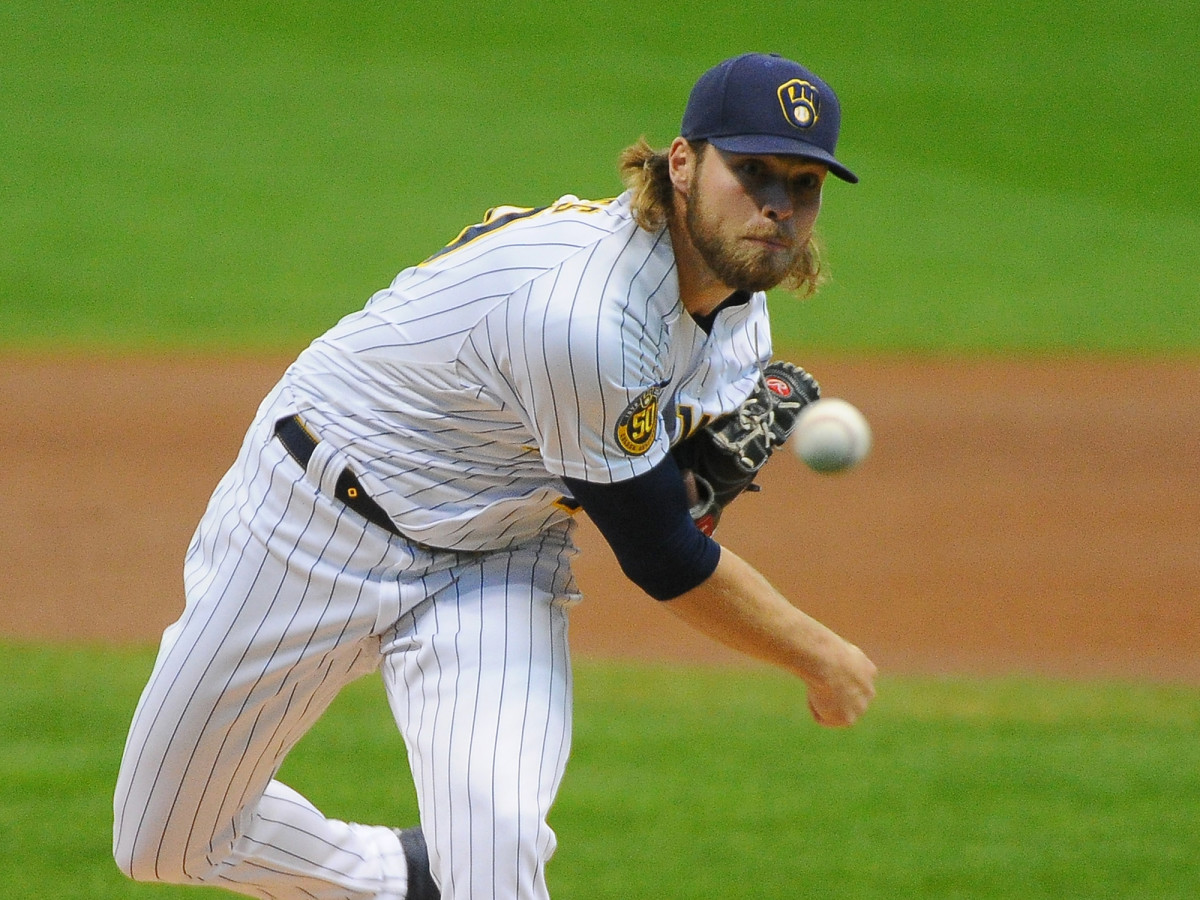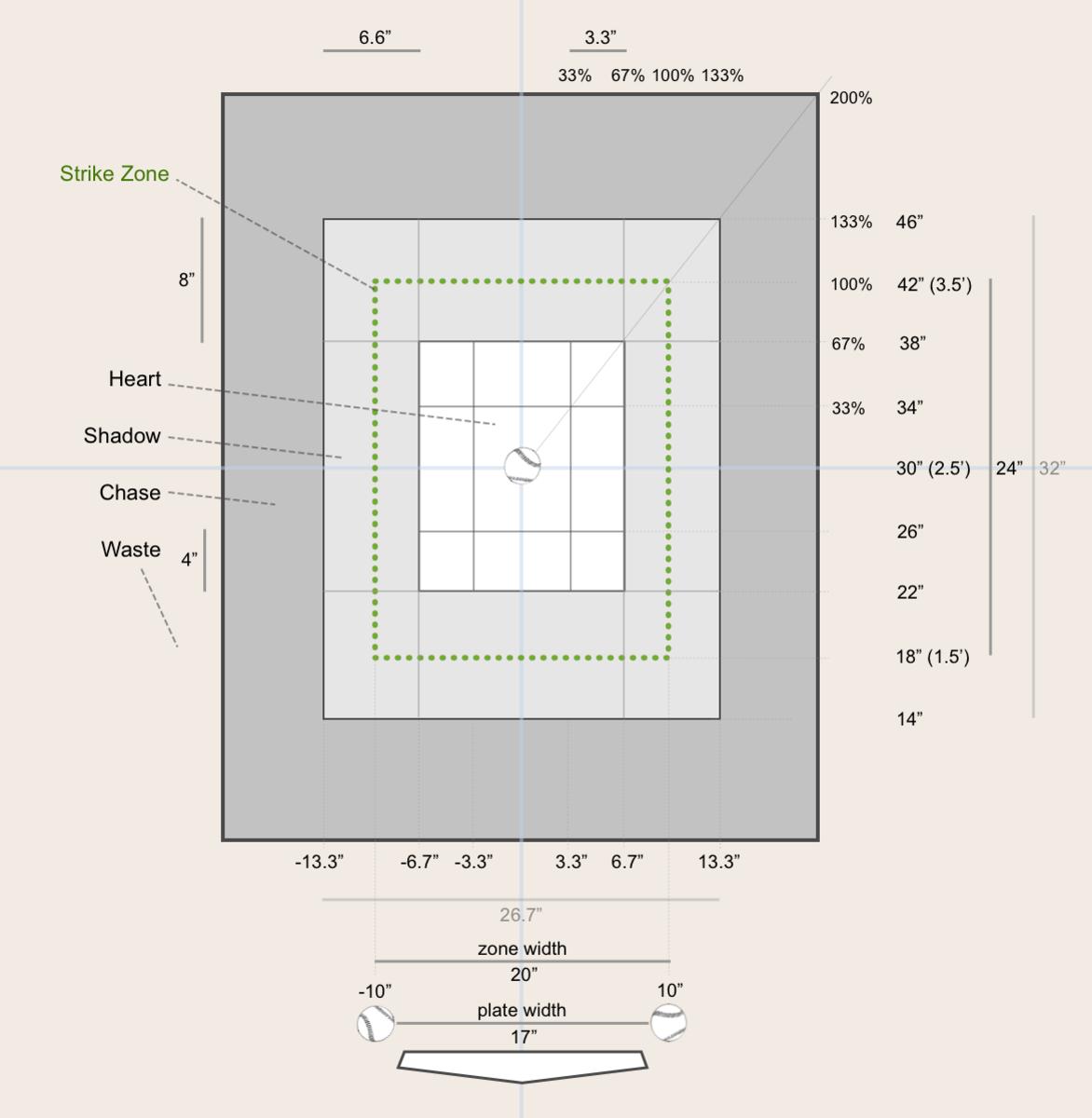Three Pitchers Poised for a Breakout Season in 2021
Over the last year, Dylan Bundy went from first-round bust with the Orioles to ace of the best Angels pitching staff since they dropped “Anaheim” from the team name. Dinelson Lamet finished fourth in the NL Cy Young voting and led the Padres to the playoffs. Devin Williams unleashed The Airbender and became the NL’s top reliever and Rookie of the Year.
Which pitchers are going to be this year’s versions of Bundy, Lamet and Williams? Let’s take a look at three pitchers who could be the breakout arms of 2021.
Corbin Burnes, RHP, Milwaukee Brewers
The Brewers have two of baseball’s best starting pitchers, though both are relatively unheralded. One is Brandon Woodruff, a bona fide ace who might be one of the few pitchers excited to pick up a bat again this season. The other is 26-year-old righthander Corbin Burnes.
In 12 games (nine starts) last season, Burnes posted a 2.11 ERA and struck out a staggering 36.7% of the batters he faced. He finished sixth for the NL Cy Young Award, but considering he pitched 59 2/3 innings in the shortened season and was coming off a horrific 2019 campaign, Burnes has yet to truly emerge as an elite starting pitcher. Until now.
• Milwaukee Brewers 2021 fantasy preview
Burnes has always had electric stuff, but he finally learned to harness it last year. Sure, he carried about a third of the workload that a frontline starter would have in a regular season, but the improvements he made are sustainable. The two biggest changes he made were with his pitch selection and command.
At 6' 3", 225 pounds, Burnes has the prototypical build of a power pitcher, and with his good velocity and high spin rates, it would make sense that he’d rely mostly on his four-seam fastball. That was the case in 2019, when he threw his four-seamer 52.5% of the time—and it got rocked. Opponents hit .425 and slugged .823 against the pitch. He finished that season with an 8.82 ERA across 32 games, all but four in relief, and allowed 17 home runs in just 49 innings.

His four-seamer went from his most-used pitched in 2019 to his least used one last season (2.5%). Instead, he turned to his power sinker and cutter, throwing each about a third of the time and using them as he would his four-seamer. He worked his three secondary pitches (slider, curveball, changeup) off his sinker and cutter, throwing his slider mostly to right-handed hitters, his changeup mostly to lefties and his curveball to both. Opponents hit .103 against his slider, .182 against his changeup and a ridiculous .095 against his curve.
At first glance it appears Burnes’s command issues persisted last year and his strong season came in spite of his glaring 10% walk rate. Looking closer, it’s clear his control actually improved even as his walk rate increased. This is best explained with Statcast’s pitch tracking data, specifically using its attack-zones feature.
Instead of breaking down the regions around home plate into quadrants or the traditional strike zone, Statcast tracks each pitch into 39 areas that are divided into four layers, called attack zones, working outward from the middle. The four attack zones are heart, shadow, chase and waste. Heart covers the interior of the strike zone and is typically the most hittable region. Shadow covers the outer rim of the strike zone, the borderline edges that could be called either strikes or balls. Chase pitches are those that are definitely not strikes but could still get batters to swing, while waste pitches are nowhere near the strike zone and unlikely to induce a swing.

Burnes learned to command the shadow zone last season, throwing 40.3% of his pitches in that region and only 3.4% of all shadow-zone pitches going for base hits. The year before, he threw 38.3% of his pitches in the shadow zone, and 8.7% of them went for hits. He also threw fewer pitches in the heart region (20.9% in ‘20; 25.8% in ‘19), and allowed fewer hits on heart-zone pitches (10.4% in ‘20; 16.3% in ‘19).

The takeaway here is this: To fix his command issues, Burnes threw more pitches into the harder-to-hit regions of the strike zone and limited those he left over the middle of the plate. And in mostly abandoning his four-seamer for his sinker and cutter, his primary pitches had more movement, which made the pitches he threw in the shadow zone more deceptive and the ones in the heart zone that much harder to square up. His trajectory is definitely pointed in the right direction heading into 2021.
Griffin Canning, RHP, Los Angeles Angels
Last month when I looked at three position players poised to have breakout seasons, I wrote that the Cardinals’ “success in 2021 hinges on the performance of Dylan Carlson.” The same holds true for the Angels and righthander Griffin Canning, who turns 25 in May.
It’s no secret that the Angels’ downfall in the Mike Trout Era has been their starting pitching. But this year the club's acquisitions of veteran starters—its recurring strategy over the past handful of offseasons—could pay off because of the depth required to get through a 162-game schedule. The Angels won’t be foolishly relying on José Quintana or Alex Cobb to be their frontline starters. They have Bundy and Andrew Heaney, who was quite effective last year (1.3 WAR), for that. Then, they’re hoping for the return of Shohei Ohtani and Canning to round out their six-man starting staff.
• Los Angeles Angels 2021 fantasy preview
Canning’s overall numbers were fine, if unremarkable, last year. In 11 starts (56 1/3 innings), he went 2–3 with a 3.99 ERA and a 23.5% strikeout rate. But he greatly improved as the year progressed, going 2–0 with a 3.14 ERA and 33 strikeouts over his last five starts (28 2/3 innings).
The easy explanation for his final-stretch success is he was healthy. He was shut down due to right elbow problems in both ‘18 and ‘19, and he would’ve missed the start of the ‘20 season had it started on time. He was a first-round talent out of UCLA in ‘17, but injury concerns pushed him into the second round. His elbow was healthy last season, and he grew more comfortable as he continued to pitch.
To ease the strain on his elbow, Canning altered the grip of his curveball in the 2019–20 offseason. Coming up, he threw it more like a football, with his right hand running parallel to the ball and his two middle fingers holding the top and his thumb guiding the bottom. He switched to a spike curve grip, which generates more spin and higher velocity while creating more drop. Fabian Ardaya, who covers the Angels for The Athletic, goes into further detail about Canning developing a new curve and some of his other subtle mechanical adjustments in 2020.
Canning’s new curve became his top secondary pitch last season. He used it 22.9% of the time in ‘20, up from 16% the year before. Most impressive was the 47.1% whiff rate he registered with the pitch, putting him in company with some of the game’s elite starters. As Paul Casella of MLB.com notes, Blake Snell, Tyler Glasnow, Shane Bieber and Gerrit Cole are the only ones whose curveballs had a higher whiff rate than Canning’s last season.
Questions of Canning’s durability remain, especially over the course of a full season. That’s why the Angels added two veteran hurlers who can eat innings and turned to a six-man rotation. Canning was just hitting his stride at season’s end, and after a full offseason he should be ready to go in 2021. The Angels surely will be careful with his workload, as they will for all of their starters. So long as he’s healthy, Canning has the stuff to emerge as one of baseball’s breakout pitchers this season.
Zach Eflin, RHP, Philadelphia Phillies
For all the woes of their bullpen, the Phillies’ rotation was actually quite good in 2020. They signed Zack Wheeler in December 2019 to form one of the league’s best rotation duos with ace Aaron Nola. The two did not disappoint in their first year together, combining for 5.1 WAR in the shortened season.
But let’s not overlook Zach Eflin, who has steadily improved over the last three years and went 4–2 with a 3.97 ERA and 1.6 WAR in ‘20. His peripherals (3.39 FIP, 3.30 expected ERA) were better than his actual numbers, due in part to the small sample size of the shorter season as well as the historically bad Phillies defense. Granted, that defense doesn’t appear to be much better in ‘21, if it is at all, but there are signs that this is the year Eflin puts it all together.
• Philadelphia Phillies 2021 fantasy preview
He turns 27 less than a week into the season and is entering his prime, both in terms of his age and his experience; this will be his sixth year in the big leagues. His strikeout rate jumped from 18.3% in ‘19 to 28.6% last year, while his walk rate dropped to 6.1%. The difference between his strikeout rate and walk rate was 22.4%, ranking in the top 20 in the majors and ahead of aces Zack Greinke, Blake Snell and Hyun Jin Ryu.
Like Burnes, Eflin mostly shelved his four-seamer and turned to his sinker in ‘20. He also relied on his curveball as his top put-away pitch, using it 13.1% of the time last year, up from 5.1% the year before. This was a smart move. His curveball’s whiff rate was 43.9%.
If Eflin continues to progress, using his sinker and curveball more frequently to miss more bats and induce soft contact, he’ll provide the Phillies with a top-tier rotation trio and have his breakout season in 2021.
